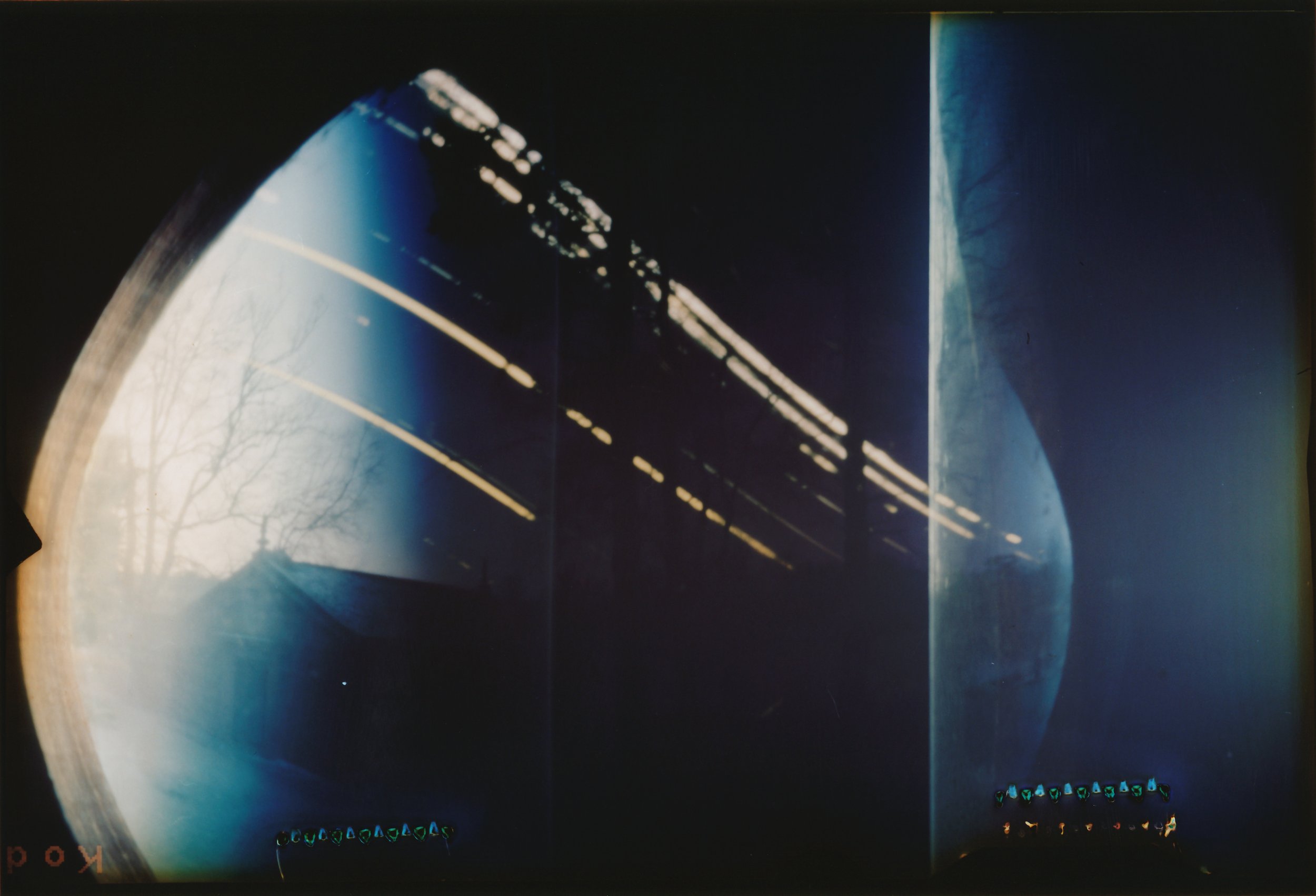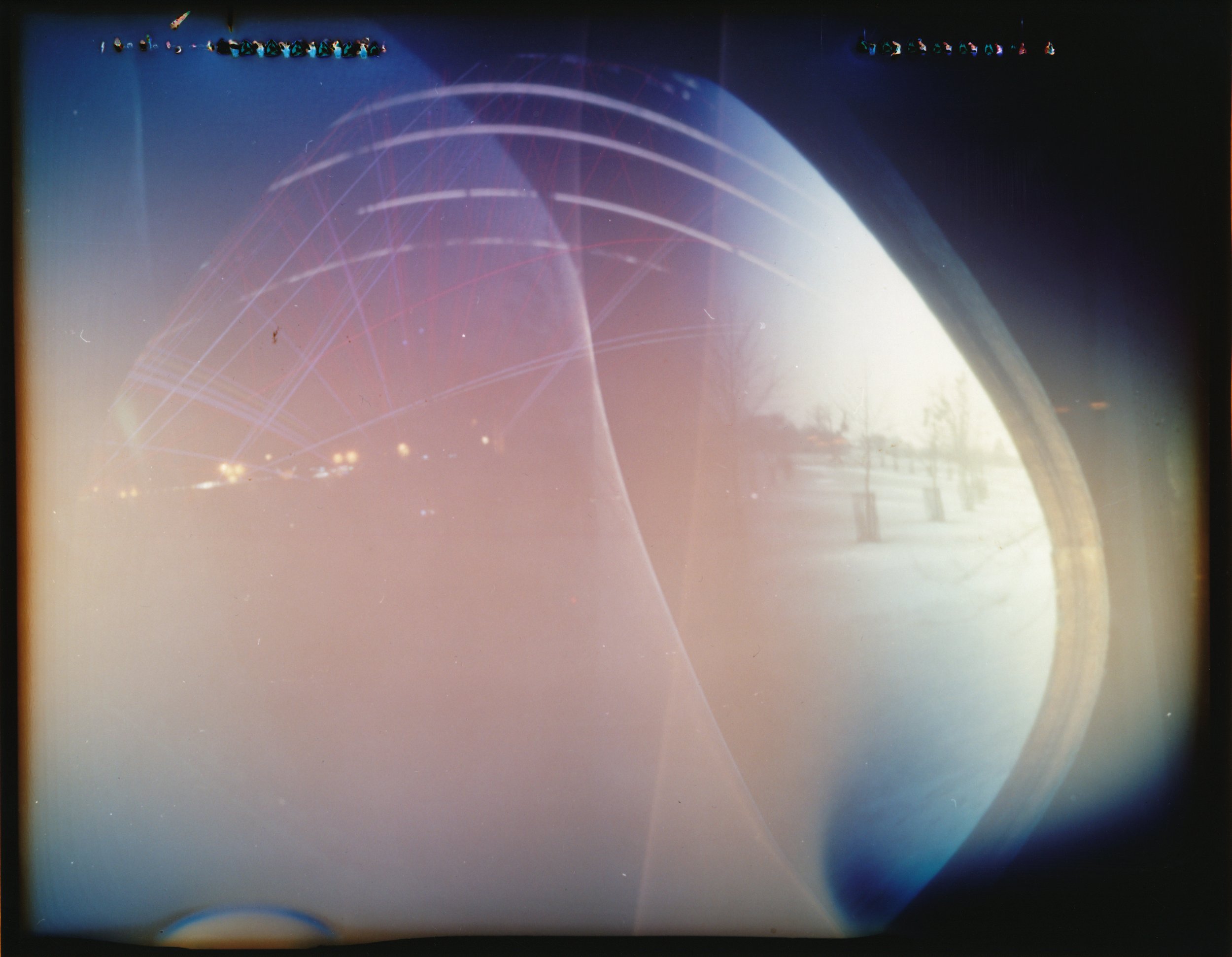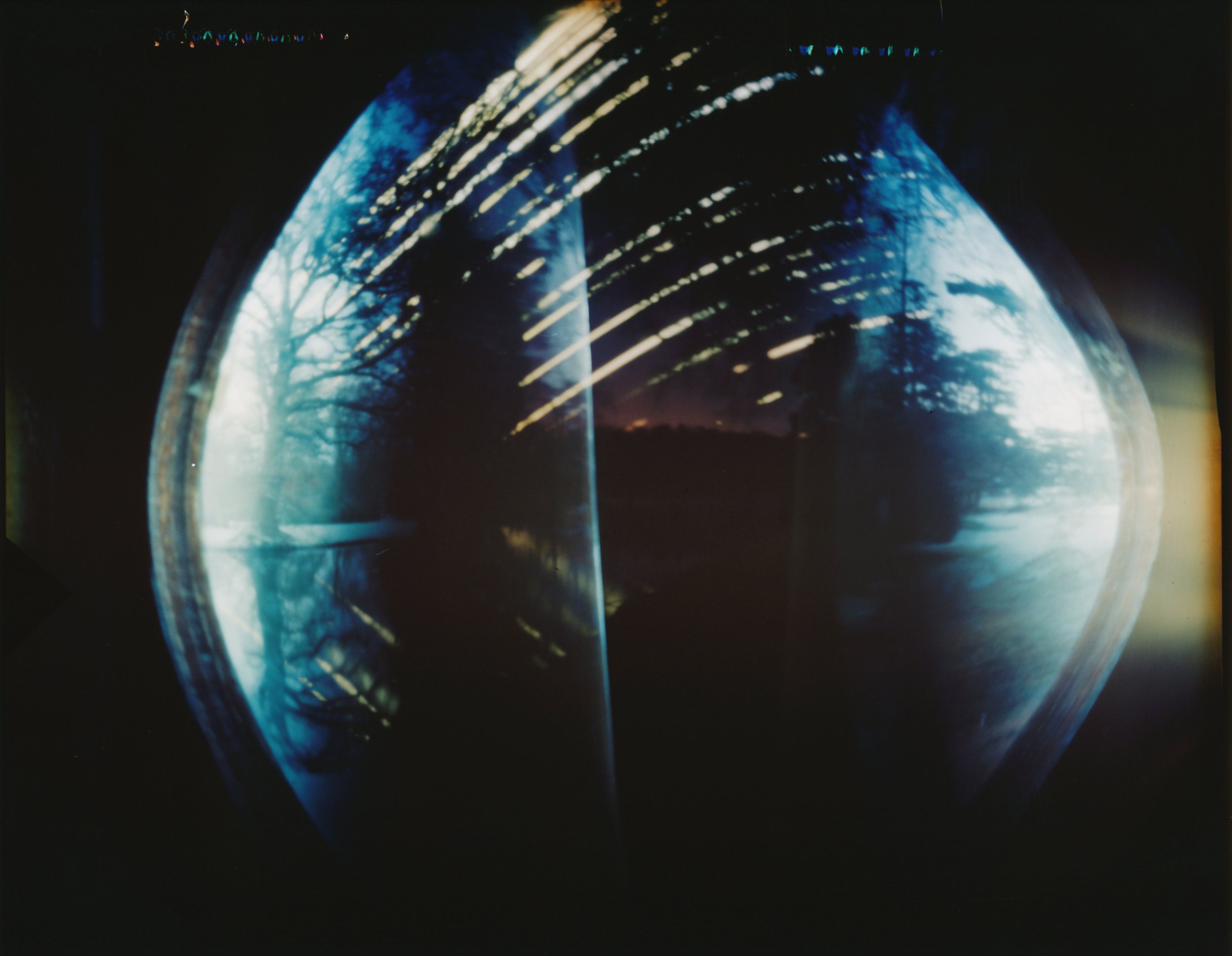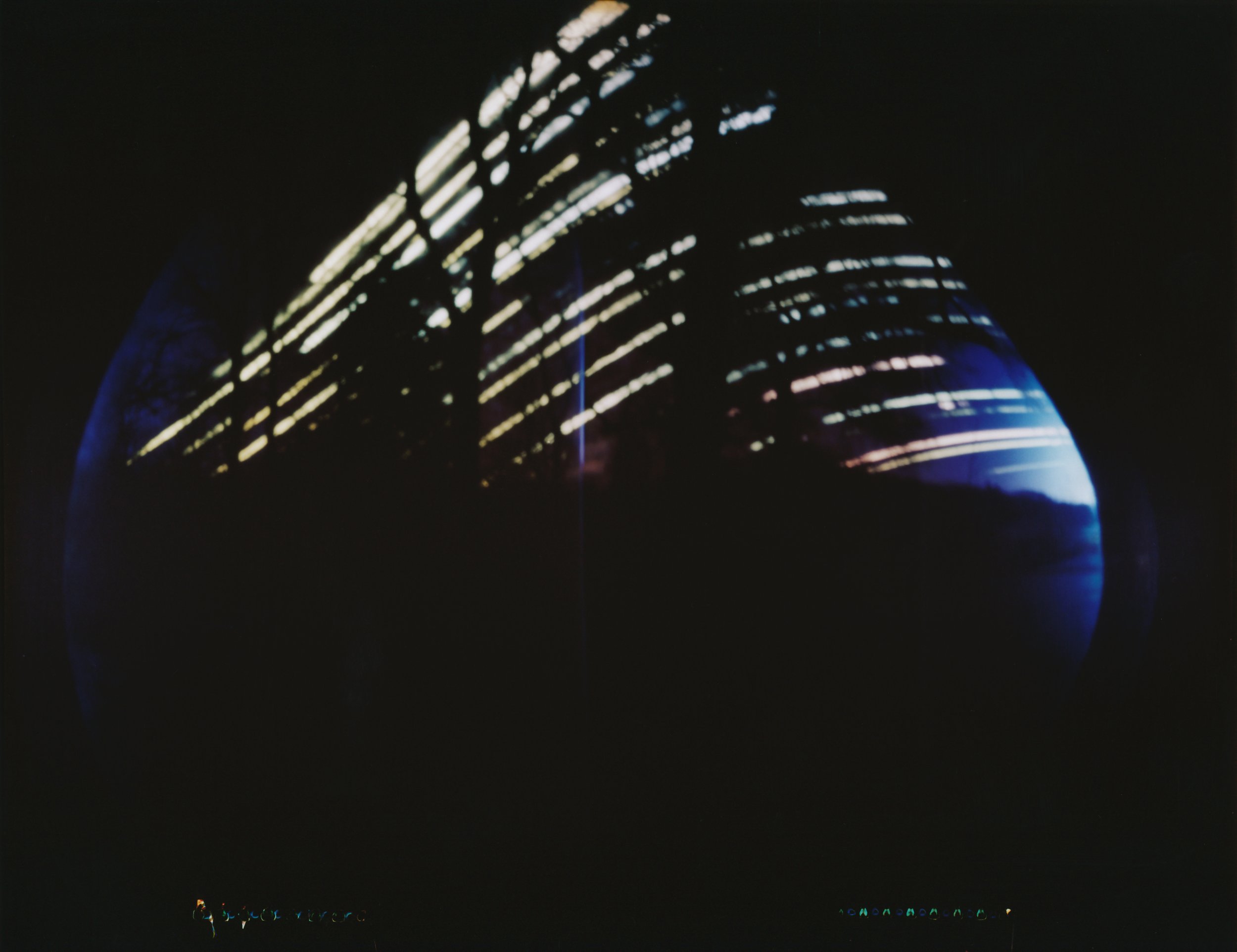a n t h o n y
c a r r
Burghley Lunar-See




This work began as a self-imposed challenge; to build a camera and apparatus that had the ability to capture multiple moon trails in a single image, over a long period of time. However, it transformed into a contemplation on the cycles in nature and the importance of darkness to us all.
Burghley Lunar-See is a series of time-lapse pinhole photographs taken in the public and private gardens at Burghley House in Lincolnshire. Between November 2012 and March 2013 twenty cameras were disguised (and protected) inside wooden nestboxes distributed throughout the grounds. Open during the night, with a total exposure of roughly 1150 hours of darkness, the images are a record of the nocturnal rhythms of the moon as it journeys across the heavens. The repeated arc of its east to west path rising and falling unabated, only failing to register on film when blocked by clouds.
The sun is also present, sneaking itself uninvited into frame at the margins. Not content to allow the moon to have the spotlight all to itself, and due to the design of the timelapse mechanism, sunlight makes an appearance around dusk and then again at dawn each day. This second layer of repetition of day then night, of light and dark is a fundamental pulse in the rhythm of life. Night follows day, which followed night, which followed day, and so on. And while these natural patterns are what kickstarted life on Earth, leading to the evolution of homo sapiens, we humans have developed ways and technology that interferes and undermines their effectiveness. One of the more subtle interrupters is captured in image Camera 34, via the traces of its repeating schedule pattern. Planes produce arcs of their own during each nocturnal flight, however this unwanted light pollution together with all other humanmade artificial light disrupts all flora and fauna on our planet that rely on the continued presence of darkness.
Anthony Carr is a visual artist working in photography, sculpture and more recently moving image. With an approach rooted in experimentation, he is interested in and excited by the intersection of art and science and with the general science of photography. Through exploration and curiosity, Carr is always striving to reveal something beyond our human perception, illuminating both the visible and invisible. His practice celebrates ‘slow photography’, embracing the accidents, oddities and optical artefacts that can occur in-camera.